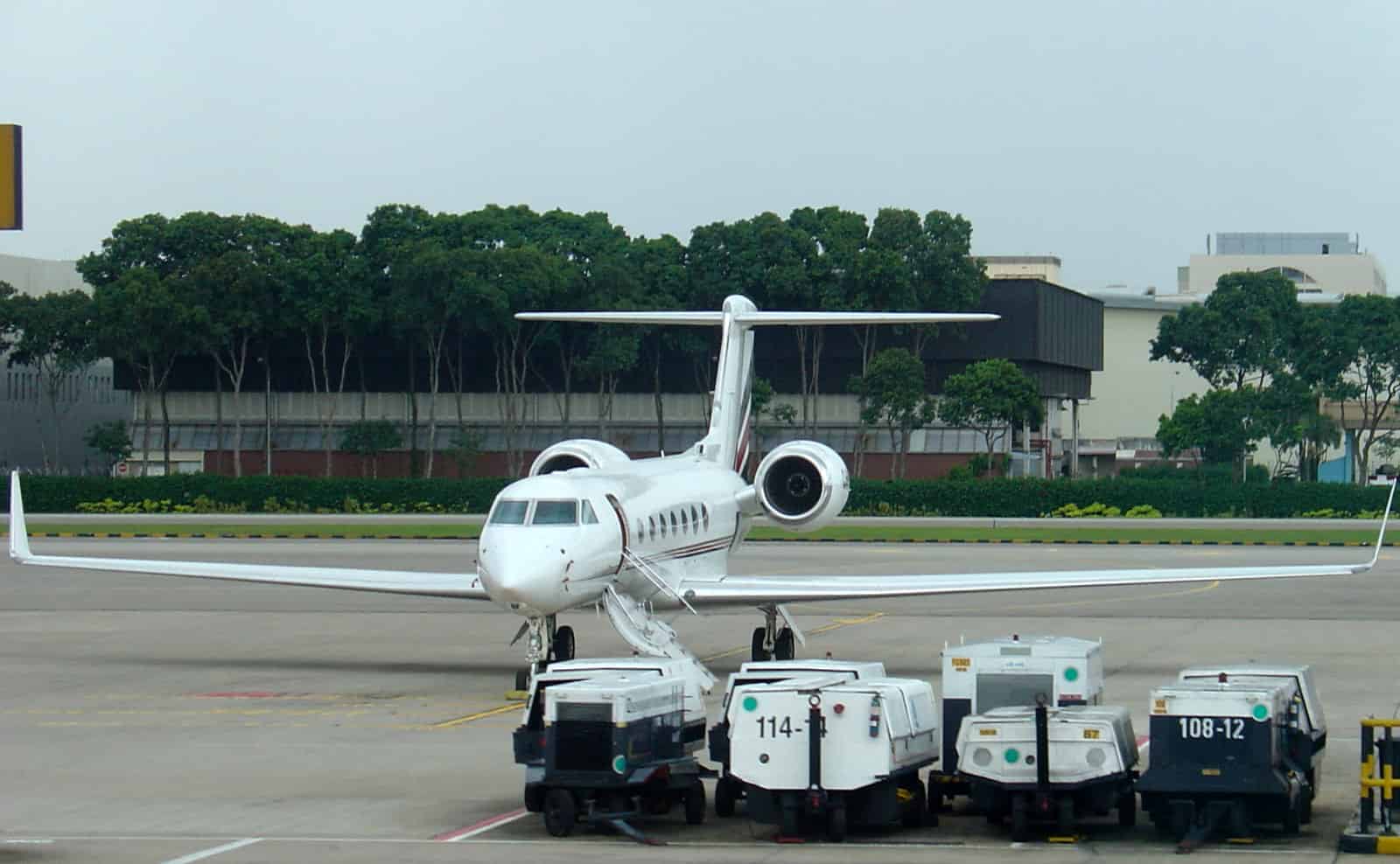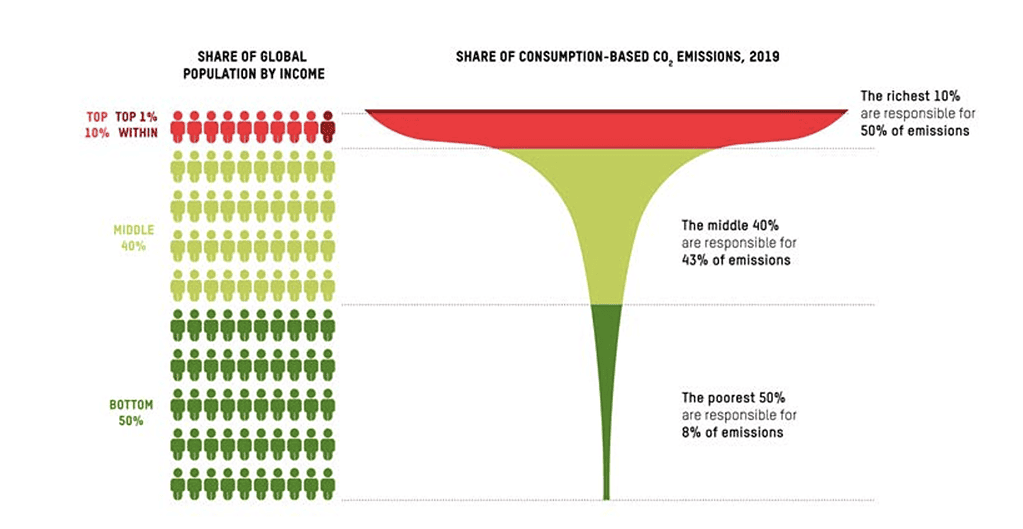
We’re all responsible for the climate crisis, but we’re not all equally responsible. New evidence suggests that the wealthiest 1% carry a disproportionately large burden.
Rich irony
The 1% of the population that concentrates most of the wealth produced as much carbon pollution in 2019 (the most recent year with available emissions and wealth data) as the five billion people that make up the poorest two-thirds of humanity, according to a new report published by the NGO Oxfam.
The disproportionately high emissions will result in 1.3 million additional deaths related to heat worldwide, roughly equivalent to the population of Dublin, Ireland. Most of these deaths are expected to occur between 2020 and 2030. In the US, the top 1% alone will contribute to over ten percent of these global heat-related excess deaths.
The report, Climate Equality: A Planet for the 99%, is based on research done with the Stockholm Environment Institute (SEI). It analyzes the consumption-based emissions of different income groups, highlighting the huge gap between the carbon footprint of the super-rich, with carbon-hungry lifestyles and investments, and that of the rest of the world.
“The super-rich are plundering and polluting the planet to the point of destruction, leaving humanity choking on extreme heat, floods and drought,” Oxfam International interim Executive Director Amitabh Behar, said in a new release. Ending the fossil fuel era won’t be possible without also addressing the era of extreme wealth, he added.
Climate inequality
The super-rich 1% are key to the climate story in three ways, Oxfam reports. They have a higher carbon footprint due to their lavish lifestyle (including yachts and private planes). They also tend to invest in highly polluting industries such as fossil fuel and they have a strong influence over the media, the economy and politics and policymaking.
How the rich put their money to use also makes a big difference.
Their investments are estimated to account for between 50% and 70% of their emissions. The share of billionaire funds that were invested in pollution-generating industries was double that of the average investor. This allows them to control the world’s most powerful companies, giving them significant influence over their emissions.

Moving from individual lifestyles to broader policy implications, the report also sheds light on the political influence of the wealthy.
In the US, all senators have a salary that puts them in the top 1% income bracket globally. European commissioners are in this bracket too, and so are Australian MPs. Beyond their high incomes, many lawmakers also have made significant investments in the fossil fuel industry.
“Rich people in every country generally live in more secure housing and on land much less prone to floods or other disasters,” the report reads. “They live in air-conditioned luxury, while outside the temperatures reach deadly levels. When they are hit by climate disasters, rich people have the funds and insurance to rebuild their lives.”
Tackling the crisis
In 2030, the per capita consumption-based emissions of the super-rich are set to be over 22 times greater than the emissions target to keep global warming below 1.5 °C (2.8 tons of CO2 per capita, per year). By contrast, the emissions of the poorest half of the global population are set to remain at one-fifth of the 1.5 °C compatible level.
Oxfam suggested implementing three taxes that, together, could raise over US$9 trillion to build a green and equal world. Wealth tax (US$1.7 trillion a year), top income tax (US$6.4 trillion a year) and windfall corporate profits tax (up to US$941 billion). Over 45 energy companies made an average of US$237 bn a year in windfall profits.
Cutting emissions is easier the richer you are, as most of the emissions come from luxury goods and services, and from investments, Oxfam said. This means they have a greater capacity to make deep and immediate cuts to help the world stay below 1.5 °C. For example, cutting down on frequent air travel, private jets or fleets of high-end cars.
“The super-rich are plundering and polluting the planet to the point of destruction and it is those who can least afford it who are paying the highest price,” Chiara Liguori, Oxfam’s Senior Climate Justice Policy Advisor, said in a statement. “We need to ensure the rising costs of climate change fall on those most responsible and able to pay.”
As the clock ticks on our planet’s climate health, the burden of action weighs heavily on the shoulders of the ultra-rich. Their lifestyle choices and investment decisions have not just defined their opulence, but have led to a crisis for everyone on Earth. The path to a sustainable future, therefore, hinges on a crucial pivot — a shift from extravagant consumption to responsible stewardship.
Our planet’s future, teetering on the brink of irreversible change, demands nothing less than an immediate and transformative response from the world’s wealthiest.









